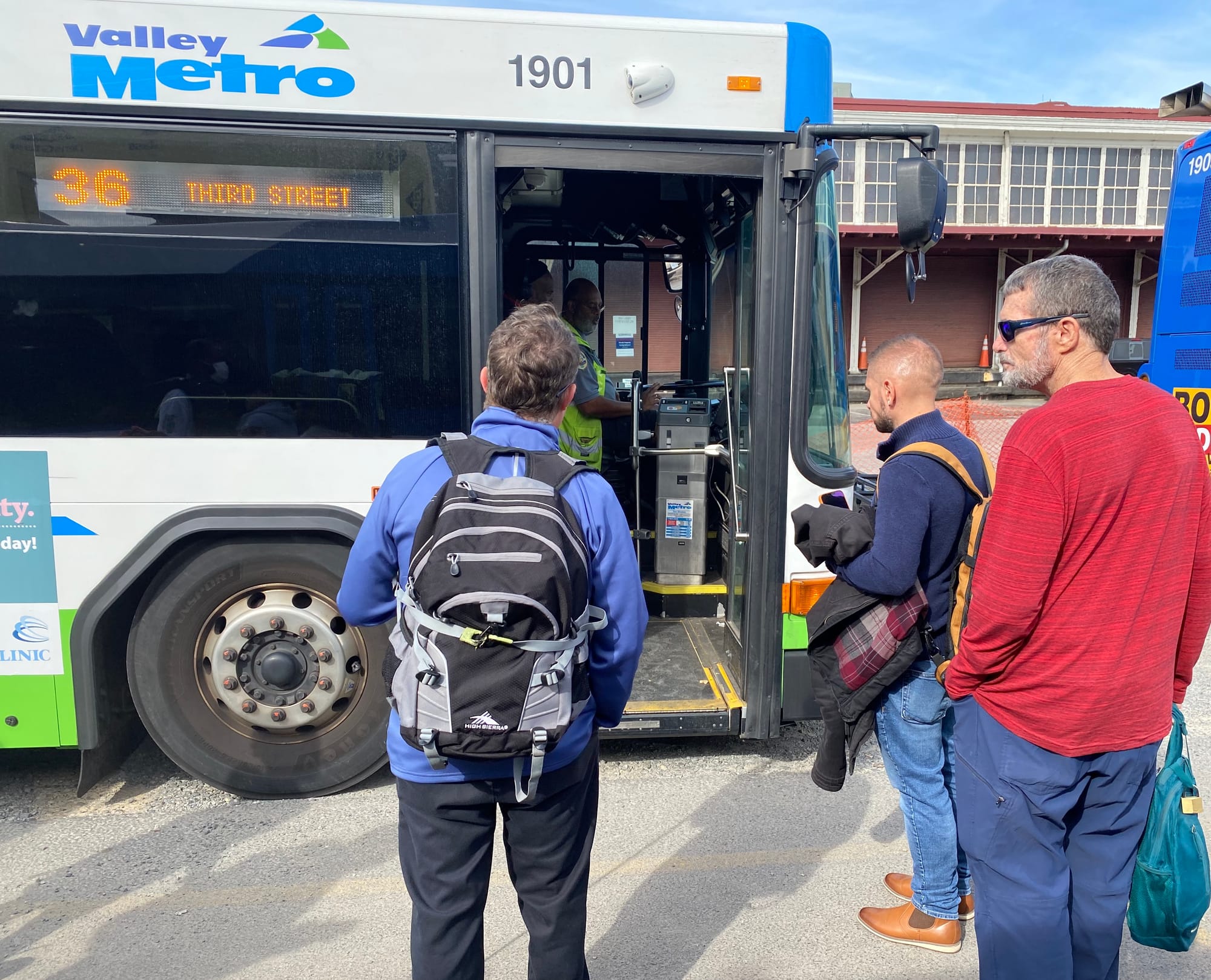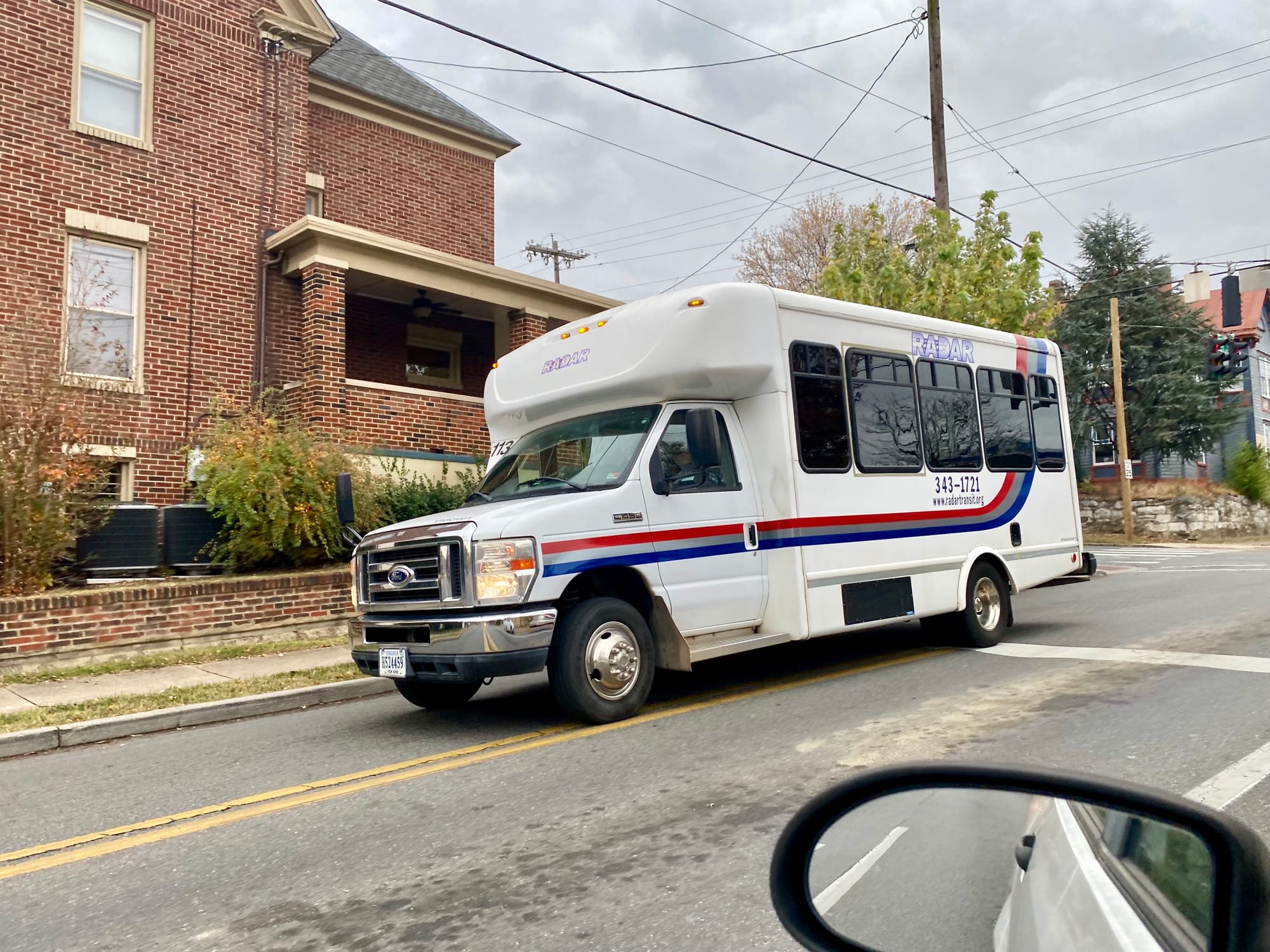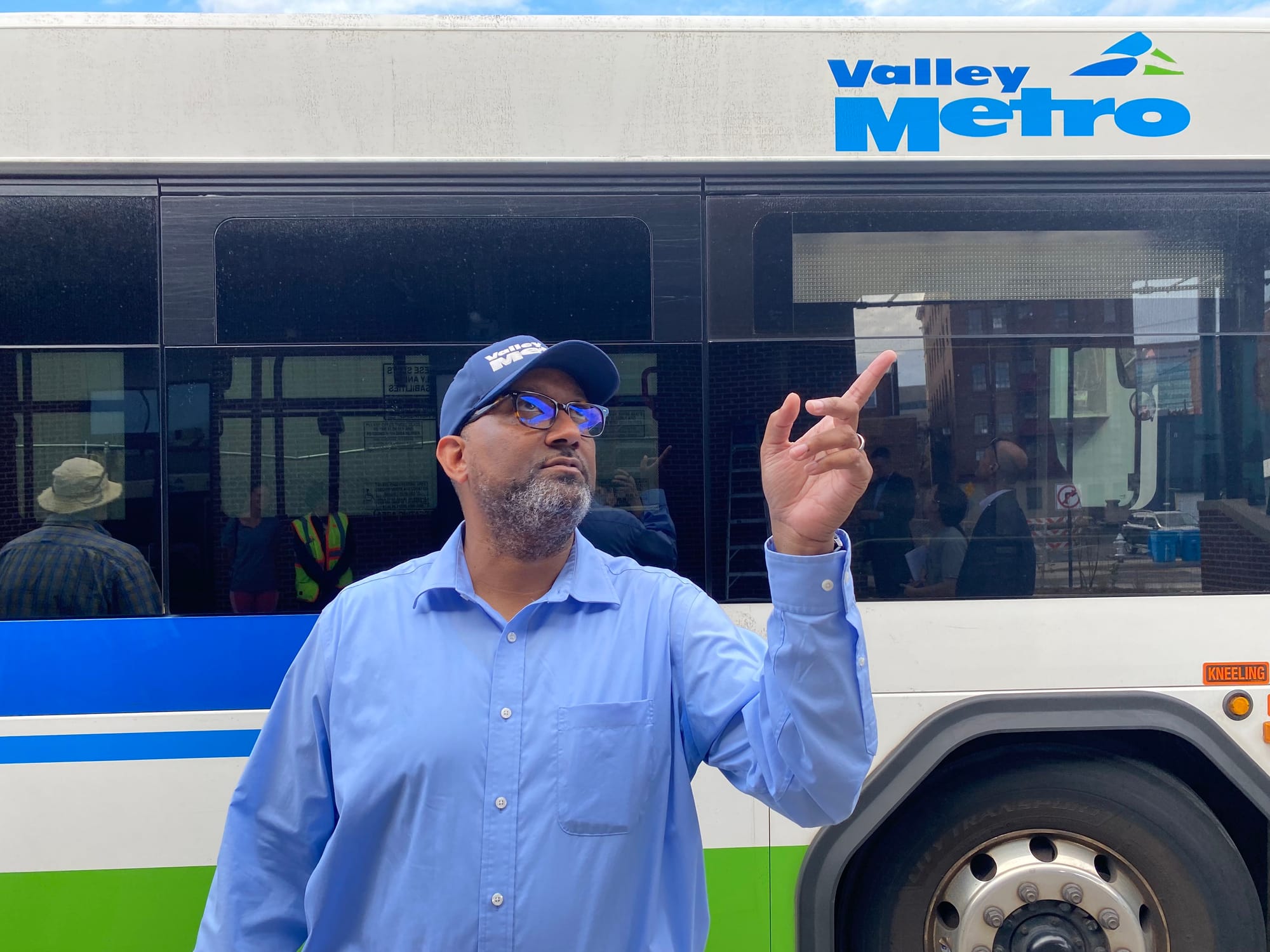Roanoke Transit Plan Calls For Extending Bus Service into County, Expanding 'Microtransit'
What public transit looks like in Roanoke over the next decade is the focus of the strategic plan.

A new Roanoke transit plan calls for extending Valley Metro buses into Roanoke County, making popular rides more frequent and expanding a piloted “microtransit” service.
What public transit looks like in Roanoke over the next decade is the focus of the strategic plan, which replaces a 2018 roadmap. Here’s what the plan highlights:
On-demand 'microtransit'
Officials must soon decide how to maintain and expand a two-year pilot program that offers Sunday and late-night rides. City leaders earmarked $1.8 million in federal pandemic relief funds to operate that on-demand van service, called MetroFLX.
Kevin Price, general manager of Valley Metro, said at a recent meeting that he had received an email from a rider expressing gratitude for MetroFLX. That person used to pay $20 to $26 to take a late-night Uber back home from work. Now they pay $1.75.
“That project had a direct impact on that person’s bottom line,” Price said.
MetroFLX has brought Sunday public transportation back to Roanoke for the first time in about four decades, according to Vice Mayor Joe Cobb, who is president of the Greater Roanoke Transit Company board.
When the pilot kicked off at the end of January, there were 20 riders. That increased each month until peaking in June at 1,199 riders in June, according to Valley Metro data. Ridership decreased slightly to 1,066 individuals the following month, the most recent readily available.
Because of the microtransit service’s popularity, the plan calls for expanding MetroFLX service, including into the early mornings.
Regular bus service begins at 5:45 a.m., and Price noted that some residents need to get to work by 5:30 or 6 a.m.
“Recent increases in MetroFLX ridership indicate that additional capacity on Sundays and during certain evening peak periods may also be necessary,” the plan states.
Sharon Fritz said she occasionally takes MetroFLX to attend church on Sundays. The door-to-door van service requires that riders call 24 hours in advance to book a ride. But for Sundays, Fritz says she would have to call on Monday or Tuesday morning at the latest.
“Most of the time there will not be a space for me, and then I have to make other arrangements,” Fritz said. “But that's great. I'm happy [it’s being used] for people going to work.”
Transit officials have said the on-demand service could inform future fixed routes. Price said it is too soon to say what that might look like, but noted the most popular destinations so far are Carilion Roanoke Memorial Hospital and the Roanoke Centre for Industry and Technology.

Roanoke County bus routes
Valley Metro’s latest strategic plan includes services long-sought by transit advocates, according to Laura Hartman, a leader of the Bus Riders of Roanoke Advocacy Group.
“It’s the same things we’ve always been asking for,” Hartman said. “We want greater frequency, so riders don’t have to pay as steep of a time tax. We want extension of routes into the county, so people can access important destinations. We’re very grateful for MetroFLX, but we want it expanded into regular fixed route bus service, not this on-demand bus service.”
Advocates and city officials have long grumbled about a lack of interest (and money) from Roanoke County leaders to provide public transit to the jurisdiction. That idea has been included in transit documents since at least 2016.
“Note that any service expansions planned for Roanoke County will need the County’s endorsement and local match,” the plan says.
The plan proposes a new Electric Road route that would go between Tanglewood Mall and the Salem VA Medical Center. Another option is to do a MetroFLX pilot for the Hollins area. Combined, those services could cost $731,750 annually, the plan says.
Phil North, chairman of the Roanoke County Board of Supervisors, said Tuesday the last he heard from Valley Metro was in 2018, when a proposed extension into the county came with a $2 million price tag. North described that cost as prohibitive and said the county mostly relies on grants for transportation improvements.
“At this point in time, we don’t have the board consensus, nor do we have any budget earmarks for that in the next year or so,” North said.
North said he is not opposed to considering Valley Metro routes in the county but said it could take time to explore whether there would be demand from businesses and citizens.
“Otherwise, you'd end up running a bunch of empty buses,” he said.
Cobb, who is running for mayor, said at a candidates forum this month that he is committed to expanding public transportation.
“As mayor, I'll work to make sure we have 24-hour public transit,” he said. “I'll also work with the Roanoke County Board of Supervisors to make sure that we can pilot public transit into Roanoke County along 419 [Electric Road] and along Williamson Road. That's going to be a game changer for our community and for our citizens.”
At the same time, Valley Metro is dealing with major financial management issues, which auditors said could imperil its ability to secure future funding and provide services if not addressed.
Price said the bus system is making progress on its financial action plan. Dawn Mullins, a city auditor, took over as interim finance director in recent months after Valley Metro did not find a permanent person for the job.

More frequent bus service
A survey of 866 bus riders found most people want longer hours of service for existing routes. Those without cars, though, were more likely to favor more frequent service.
Returning highly used bus routes to peak 30-minute frequency — compared to an hour’s wait for the next bus currently — is a high priority, according to the plan.
But because of its $1 million price tag, for eight buses across four routes, the plan says this could take four to seven years to implement.
A pandemic slump in ridership curtailed Valley Metro’s every-30-minute bus offerings.
The bus system has 24 buses that operate at peak service, compared to 37 before the pandemic, according to the transit plan.
“We’re still looking at how peak service fits back into the puzzle,” Price said.
Ridership has fallen about 28 percent compared to pre-pandemic levels. Price noted it would not make financial sense to bring back peak services to those routes where a similar number of passengers would be riding in a given hour, whether there’s one or two buses available.
“It doesn't do anyone any good to put an empty bus online, just to say that you have it, right?” Price said. “You need to make sure that it fits the need of the passenger as a whole.”

